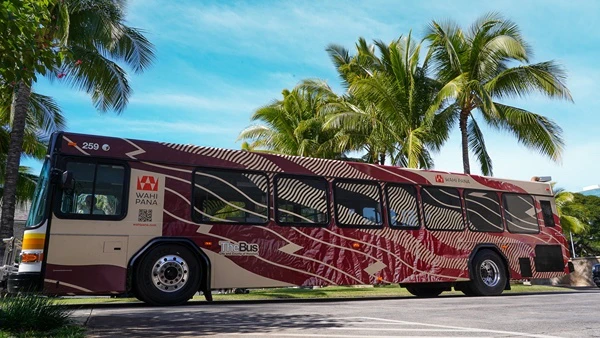Honolulu’s buses handled the chaos of Tuesday’s tsunami alert “flawlessly,” said the city’s transportation director.
Despite rampant gridlock as drivers attempted to leave inundation zones en masse, Honolulu Department of Transportation Services Director J. Roger Morton said public transportation “went as well as it ever has in an emergency.”
“I’ve been doing this for 40 years,” Morton said. “I’ve never seen this sort of coordination before.”
Morton said there are not yet any clear numbers for how many passengers boarded TheBus during the emergency, although he hypothesized that there may have actually been fewer riders Tuesday than the weekday average of around 125,000. He suggested that, in the face of looming disaster, passengers likely chose to rely on personal vehicles or carpools to escape the danger zone.
On the other hand, Morton said about 200 more people used Skyline than normal, bringing the total passenger count to 1,749 on Tuesday.
Skyline halted its rail service after 6:35 p.m. Tuesday, and Roger said that, in hindsight, DTS could probably have run for longer, given that the vast majority of the Skyline system is out of the inundation area.
However, Morton said he will consult with partners regarding the overall safety of Skyline as a tsunami refuge. While the rail system and platforms are high enough to avoid the waves, he said that stranding people on a platform with no facilities is not preferable to the city’s designated evacuation sites.
As for TheBus, Morton said 97% of buses reported being late due to the extreme traffic throughout the event. Because of this, about 50 buses around the island were mid-route as the projected wave arrival time of 7:17 p.m. approached, which rerouted to designated evacuation sites outside the tsunami zones.
Morton said that, anecdotally, some would-be passengers were still waiting for buses after TheBus suspended new routes at 6 p.m., but guessed that most people either caught a bus out or found another ride.
Bus service resumed at about 10 p.m. — some 20 minutes before the Pacific Tsunami Warning Center downgraded the alert status from “warning” to “watch.” Morton said this was in sync with the Honolulu Police Department reopening closed portions of the Farrington Highway and Fort Weaver Road.
Morton praised his department’s administration for their communication during the incident. He particularly highlighted the efforts of Handi-Van services, which rerouted passengers to the Handi-Van base, then brought them back to their homes one-by-one after the crisis ended.
“They really went above and beyond there,” Morton said.
However, Morton added that the struggles DTS faced highlighted the inadequacies of Honolulu’s infrastructure during times of emergency.
“There’s too much traffic,” Morton said. “All I can say is, thank goodness the public schools weren’t in session.”
Morton said a lesson to be learned from the emergency is that people “don’t have to go to the top of Makakilo Drive to be safe.” He said that most people within tsunami inundation zones are only a short walk — or even a short elevator ride — from safety, and that people don’t need to drive through gridlock to escape the flood zone.
“The streets are just not equipped for this,” Morton said. “If you’re in a safe place, stay there.”





